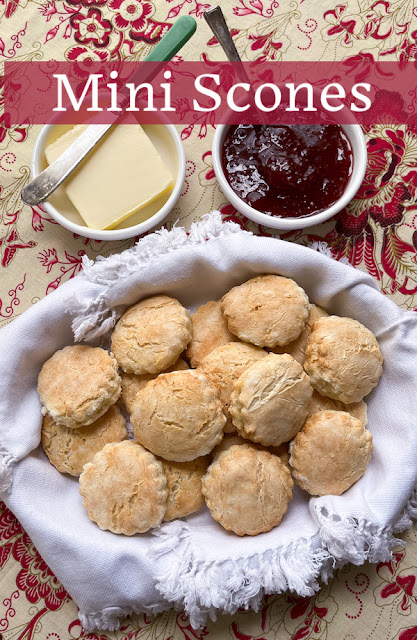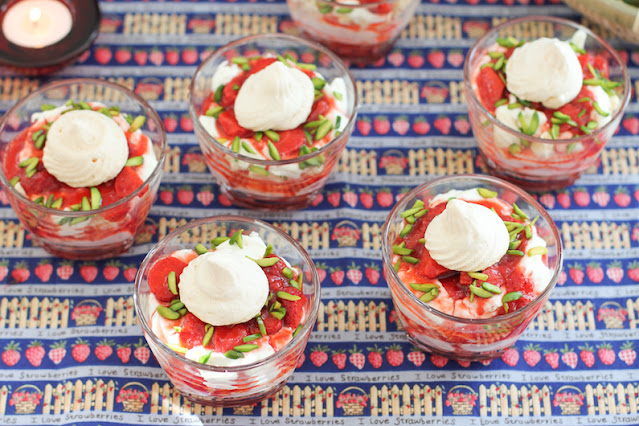These fluffy two-bite mini scones are a wonderful addition to your breakfast table. Serve them hot so that pat of butter will melt inside when you split them in two!
This recipe is based on one that a Scottish friend shared with me. She uses self-rising flour and cream to make hers a two-ingredient dough and didn’t have any measurements to offer! “Just add enough of each to make a proper scone dough,” said she. Challenge accepted! (In her defense, she went to culinary school so this stuff is second nature to her.)
Don’t panic though. I’m going to give you ingredient amounts so you can replicate these little mini scones. I used a 2 in or 5cm cookie cutter. You can use a bigger cookie cutter to make larger scones. You’ll just have to pat the dough out a little thicker so that they are proportional and bake them a little longer.
Gillian would appreciate this, she of no actual recipe: One time I didn’t have cream so I started making these with full fat Greek yogurt instead. I do love experimenting! It adds a lovely flavor and works fabulously. That is the recipe I'm sharing today.
Mini Scones
If you have self-rising flour you know is active, by all means, use it instead of the cake flour, baking powder, baking soda and salt, adding an extra 2 teaspoons of flour. I don’t often buy self-rising flour because I find it gets old if not used up in a timely manner. I keep the baking powder in the refrigerator so it’s always active well past its sell by date.
Ingredients
1 cup or 245g full fat Greek yoghurt
1 3/4 cups or 218g flour
1 1/2 teaspoons baking powder
1/4 teaspoon baking soda
1/4 teaspoon fine sea salt
To brush on before baking: 2-3 tablespoons milk
Method
Preheat the oven to 350°F or 180°C. Line a large baking sheet with baking parchment or a silicone liner.
In a mixing bowl, mix together the flour, baking powder, baking soda and salt.
Fold the yoghurt and flour mixture together until fully incorporated. If the mixture is too dry or too wet, add more flour or more yogurt accordingly. You are looking for a soft dough that isn’t too sticky.
Press the scone mixture flat until it’s about 1/2 in or 1cm thick, then use a small cookie cutter to make circles.
Cut out more scones. Place them on the lined baking tray, almost touching. Use a pastry brush to brush the tops with a little milk.
Or serve with jam and butter or cream while still warm.
It’s Sunday FunDay and today we are sharing recipes to celebrate National Hot Breakfast Month. We hope to inspire you to get in the kitchen and cook a hot breakfast for yourself or someone you love before February ends. Check out the links below:
- An English Fry Up with a Kiss of California from Culinary Cam
- Chinese Steamed Eggs from A Day in the Life on the Farm
- Corned Beef Hash from Amy's Cooking Adventures
- Leftover Veg and Paneer Paratha from Cook with Renu
- Mini Scones from Food Lust People Love
- Sausage and Spinach Breakfast Casserole from Karen's Kitchen Stories
- Soft & Spongy Dosa With Urad Dal Flour from Sneha's Recipe
- Sweet Italian Sausage Quiche with Ricotta from Faith, Hope, Love, & Luck Survive Despite a Whiskered Accomplice
We are a group of food bloggers who believe that Sunday should be a family fun day, so every Sunday we share recipes that will help you to enjoy your day. If you're a blogger interested in joining us, just visit our Facebook group and request to join.




























.png)
















.png)




















